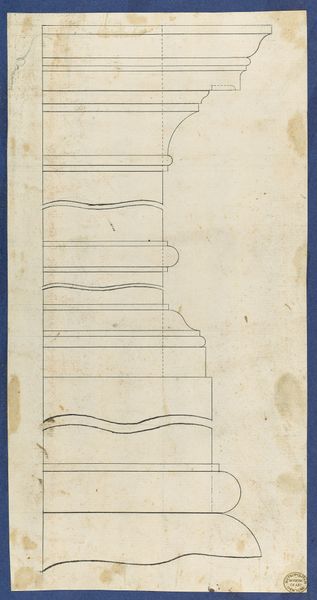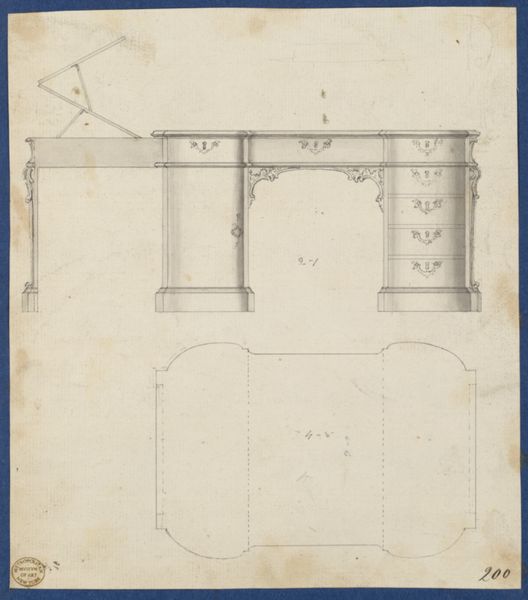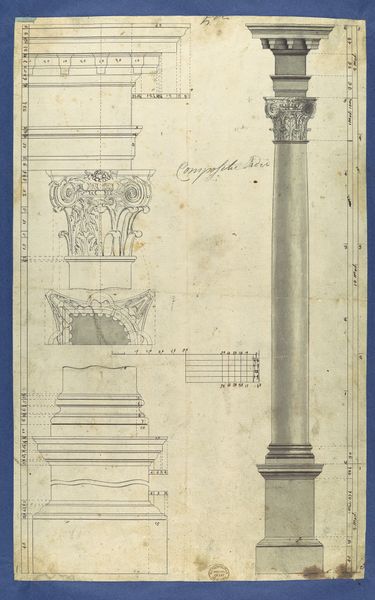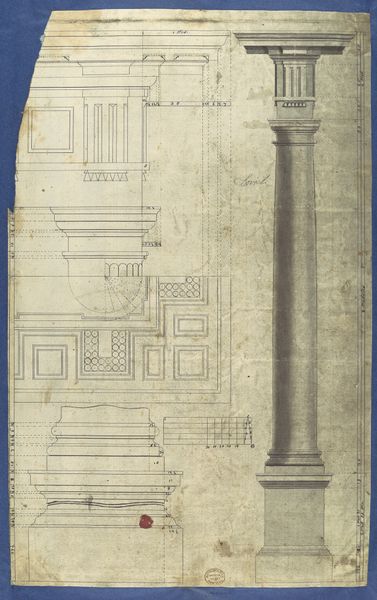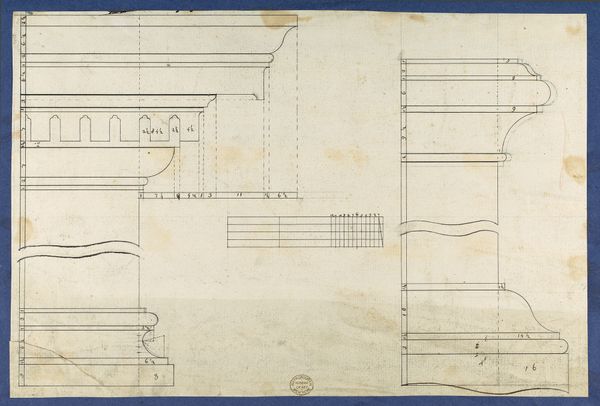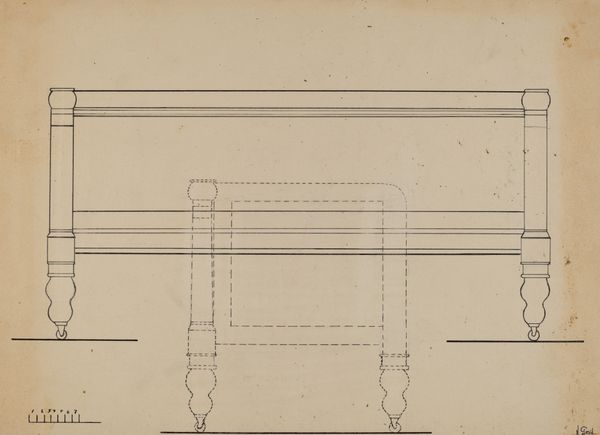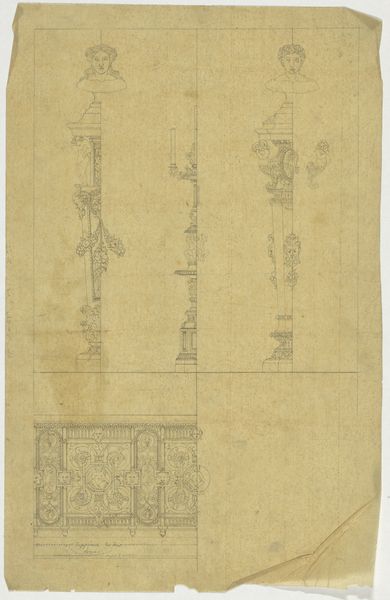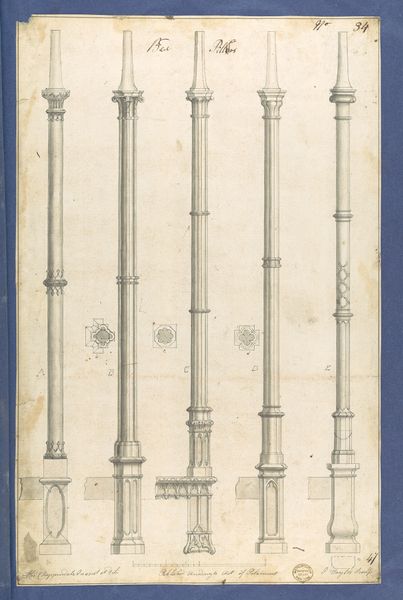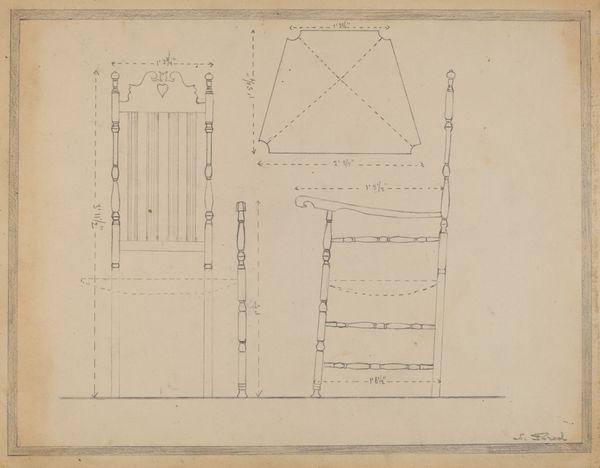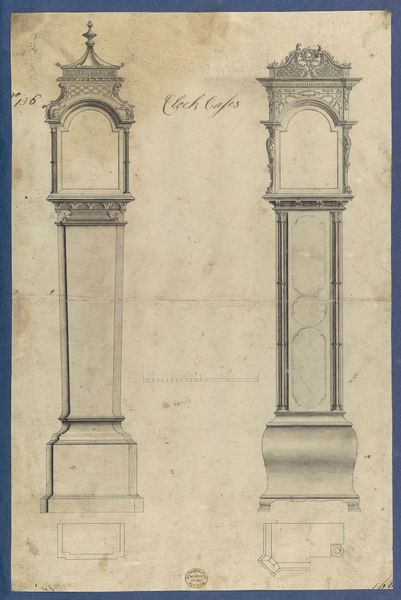
drawing, print, paper, pencil
#
drawing
#
neoclacissism
# print
#
paper
#
form
#
coloured pencil
#
geometric
#
pencil
#
line
#
history-painting
#
academic-art
#
mixed media
Dimensions: 17 3/16 x 11 1/8 in. (43.7 x 28.3 cm)
Copyright: Public Domain
Curator: This is "Chippendale Drawings, Vol. I," created between 1753 and 1770. Thomas Chippendale was a master of Neoclassical design. This particular piece resides here at the Metropolitan Museum of Art. Editor: The first thing that strikes me is the sheer, meticulous precision. It's like looking at the blueprint for an idea rather than the idea itself. A ghost of grand aspirations. Curator: Precisely. Think about the process – each line, each measurement meticulously rendered, likely by candlelight, intended as a guide for craftspeople to realize Chippendale’s vision. We are looking at a vital point in the making of ornate furniture in 18th century. Editor: It brings up questions of labor for me. The finished product, the opulent furniture, often overshadows the skill, effort, and materials that went into its creation. How much were Chippendale’s designs actually built in his workshops, or replicated by others? What was the nature of that production line? Curator: An interesting thought. While the furniture design embodies Neoclassical elegance and academic precision, it’s critical to reflect on the means of creating and executing Chippendale's ambitious ideas. These designs circulated far beyond his own workshop. These drawings acted like recipes for other workshops. Editor: I almost feel I should see timber and tools around this sheet, the dust and labor. This really highlights the materiality, what a luxury these forms represented, crafted in a society reliant on exploiting resources. The drawing gives it the air of both intention and a form of control – the furniture is destined, dictated by lines. Curator: Indeed, and it pushes us to think about design not merely as aesthetic inspiration but also as a set of labor instructions tied to the economy and to hierarchies that existed at that time. Editor: I see more clearly how design embeds intention and material reality—making this ‘drawing’ something more than just a draft. Curator: Right, it reveals to us so much more when we stop to consider the economic machinery of even the most “beautiful” works.
Comments
No comments
Be the first to comment and join the conversation on the ultimate creative platform.

